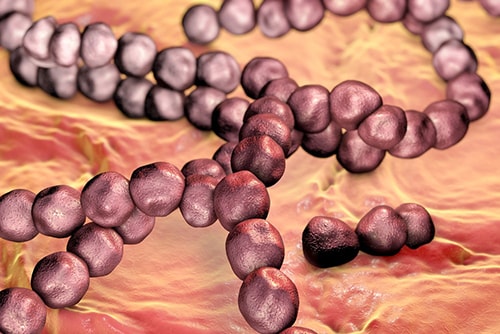Teaching patients about dental biofilm could be the key to motivating them to take charge of their Whole Mouth Health. But how can you explain biofilm’s delicate balance in terms the average person will understand? Furthermore, how can you motivate your patient to take this information to improve their oral health?

A Simple Explanation of Dental Biofilm
Patients who have little knowledge of biofilm may think one magic swipe of a toothbrush will kill bacterial intruders and resolve disease. The reality is much more complex. We must educate patients and help them understand the body’s fragile ecosystem.
When you introduce patients to the concept of biofilm, keep the definition simple and make sure to emphasize how it affects them. Check out this sample explanation: “Biofilm contains groups of bacteria and other organisms throughout your whole mouth, including on your teeth, tongue, cheeks and gums. If you have too much of some and not enough of others, you could develop an oral disease.” Be short, quick and to-the-point!
Practical Advice for Patients
Offer examples to help patients understand how numerous factors affect their overall health and ultimately their biofilm. Excess sugar consumption, for example, may lead to an overgrowth of bacteria causing caries and may even trigger Candida albicans in the oral cavity, according to Frontiers in Microbiology.
Twice-daily brushing, daily flossing, and occasional mechanical debridement decrease the overgrowth of microbes, but dietary choices are equally important to oral health. Explain to your patients why it’s important for them to reduce the amount and frequency of sugars and starches they eat and drink. The European Federation of Periodontology suggests limiting sugar to mealtimes. You could also let patients know that probiotic foods they may have heard promoted for gut health may also be good for balancing their oral microbiome. You may want to consider suggesting that your patients eat unsweetened plain or Greek yogurt as part of a healthy diet, including as a good source of protein and calcium.
Biofilm, Caries and Periodontal Disease
The European Federation of Periodontology reminds us that dental caries and periodontal disease are the most common human diseases and that our risk increases as we age. As we learn more about the relationship between dental biofilm and our overall health, we can more easily pass this knowledge on to our patients.
Modern oral care instructions should include recommendations to help create a positive ecosystem in the mouth by cultivating a healthy and balanced dental biofilm. If patients do not understand why or how to do this, they will not be motivated to change their habits. Be patient in explaining your recommendations and remind the patients in your chair that you are empowering them to be proactive about their oral health.
Coaching Tips
Dietary and behavioral shifts do not happen overnight. Patients need persistent coaching and inspiration to make the necessary changes to maintain or return to better health. Have resources readily available to share at appointments. Recommend a podcast, offer personal coaching or provide referrals to nutritionists and health coaches for a beyond-the-mouth approach.
Dental professionals are not only teachers. We’re students, too! To benefit our patients, we need to study all we can on dental biofilm and then learn how to convey our complex knowledge into simple terms. If you’re able to explain the oral ecosystem, perhaps you can boost patient compliance and motivate your patients to attain whole body and Whole Mouth Health.




You must be logged in to post a comment.